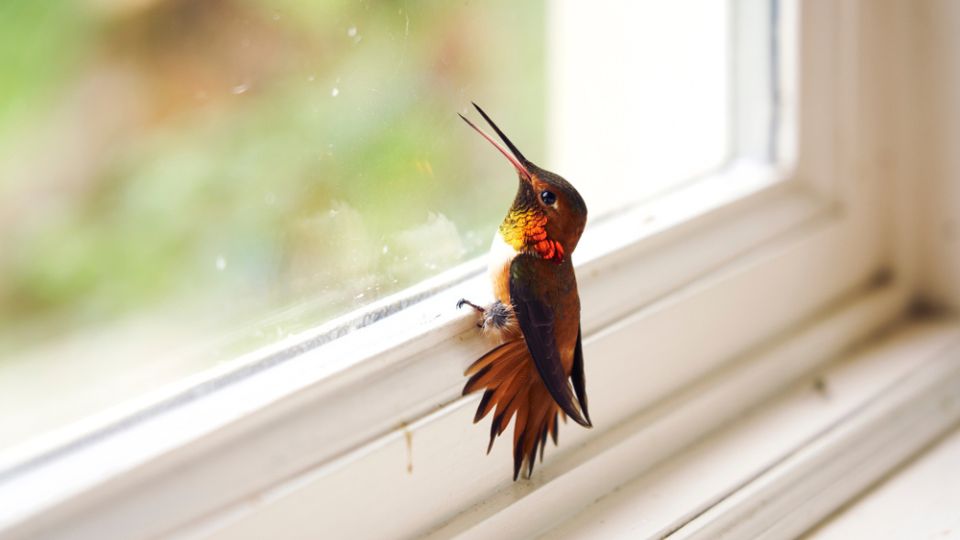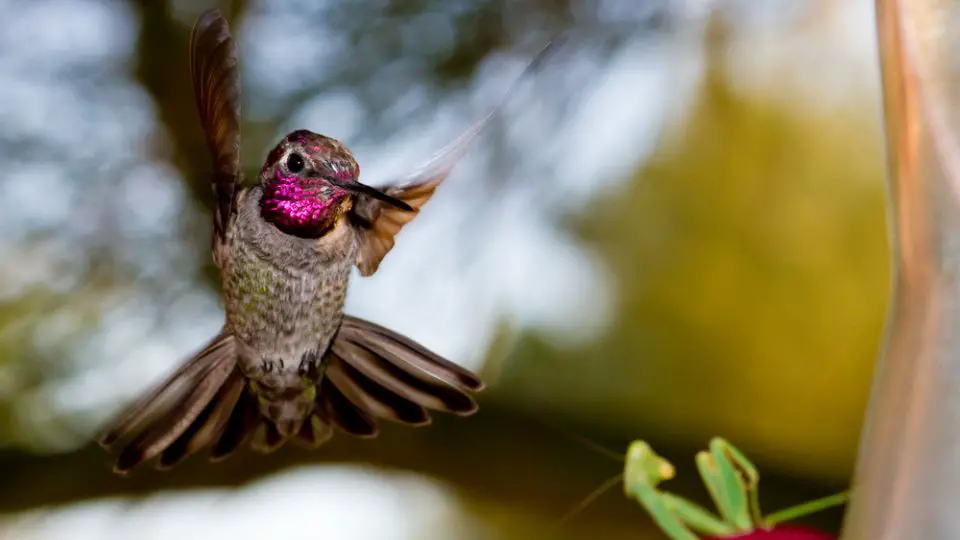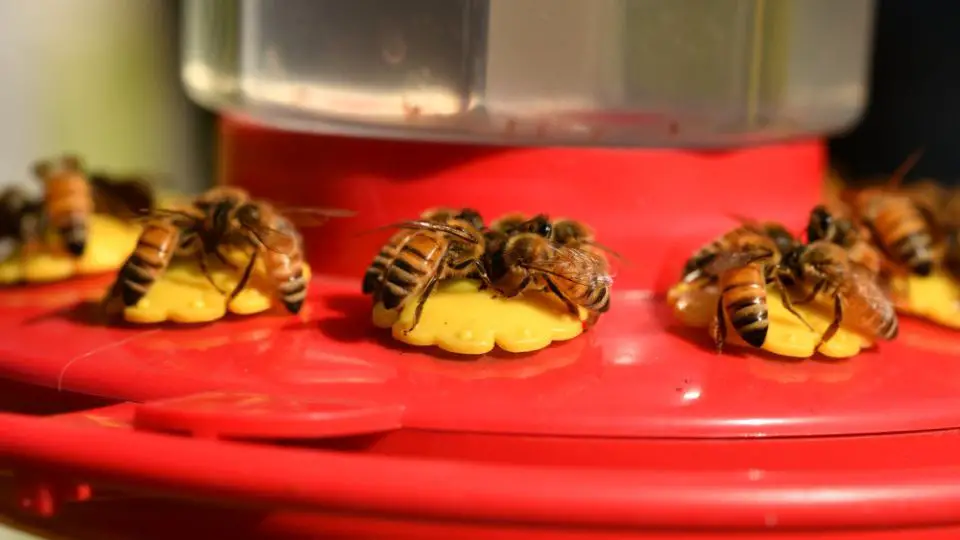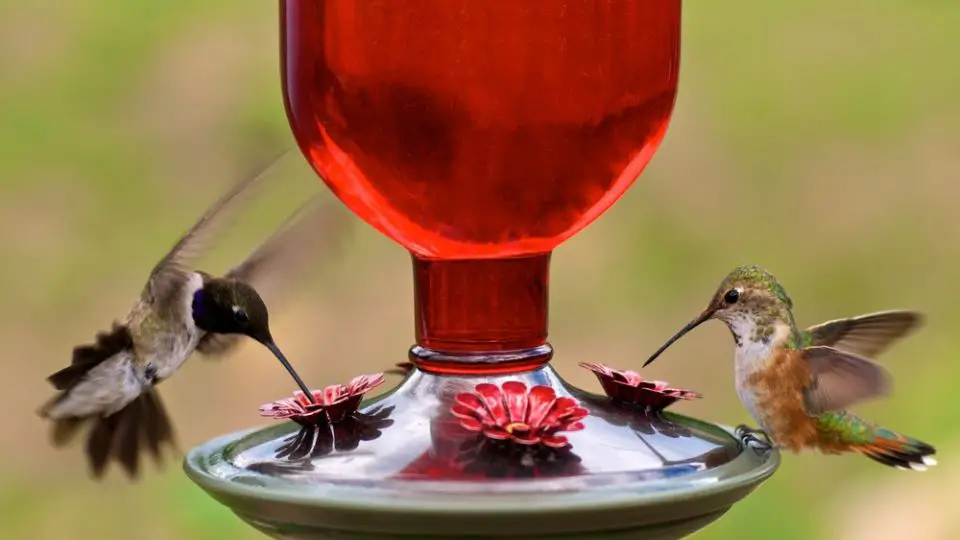Some of the most common hummingbird predators include other animals like cats, larger birds, frogs, and snakes. Even the habitat loss caused by humans, or diseases transmitted through feeders can affect them.
But did you know that dragonflies can turn into hummingbird predators? Unfortunately, so can praying mantises. Keep reading to learn about the dangers hummingbirds face daily.
Table of Contents
What Are Hummingbirds Afraid Of?
Hummingbirds are extremely smart and know they’re small, so they get afraid of many larger things. Loud music, dog barking, and children can scare them away.
Hummingbirds will become more cautious around other large birds. Especially so, if they find themselves around sharp-shinned hawks, American kestrels, orioles, or any other larger birds—such as the greater roadrunner.
Further, many other bird species can represent danger. If you place a bird feeder with seeds to attract other types of birds as well, hummingbirds could leave.
What Is a Hummingbird’s Worst Enemy?
Habitat loss is the number one danger for hummingbirds. With current urbanization trends, agriculture development, and man-made changes in their environment, hummingbirds suffer.
Remember that these birds have very small territorial needs, making even the slightest disturbance tragic. Besides the severe issues with habitats, hummingbirds face other immediate dangers almost every day.

10 Things That Kill and Harm Hummingbirds
These are the top 10 things that can kill or harm hummingbirds. Some of these are in your backyard:
1. Mammals
Various mammals, including domestic and feral cats, chipmunks, or dogs, can catch low-flying hummingbirds and harm them. They usually see the birds as toys or food due to their colorful feathers.
2. Feeders
Hummingbird feeders are also a common source of disease. Nectar feeders can quickly get dirty and moldy, which makes hummingbirds sick.
Additionally, malfunctioning and leaky feeders attract wasps and bees. These insects could sting the hummingbirds and ultimately kill them.
3. Other birds
If you have feeders for other small birds of prey, know that these wild birds can become a threat to hummingbirds. Loggerhead shrike and blue jays are avivorous and eat hummingbirds on sight.
4. Spiders
Even though female hummingbirds use spider silk to build nests, sometimes they can get tangled in spider webs. Orb-weaver spiders are especially dangerous since they’re known to catch these tiny birds in their nets.
Some reports show Ruby-throated Hummingbird got caught up in a spider web. The spider treats it like any trapped insect.
5. Praying mantises
The praying mantis is a known hummingbird threat. They will quickly catch hummingbirds with their forelegs and eat them before the bird is able to escape.

6. Extreme weather
When it gets colder, hummingbirds often go into torpor to save their energy. However, changes in the climate are a serious danger for hummingbirds and their habitat.
7. Frogs
Even though hummingbirds usually fly high, a bullfrog can catch them. However, this is not such a common occurrence.
8. Snakes
Snakes are another threat to hummingbirds. They lurk around hummingbird nests and feed off of hummingbird eggs.
Unfortunately, tiny birds can’t defend themselves from this predator. If you see a snake attacking a hummingbird nest, you might have to step in.
9. Pesticides
Pesticides used in landscaping can cause significant harm to hummingbirds. Wanting to control the bugs in your yard is normal, but know that hummingbirds eat bugs and can accidentally ingest the poisoned ones.
10. Other insects
Wasps, hornets, bees, and even a robber fly can attack the hummingbirds and hurt them.
Other dangers include:
- Other hummingbirds — When they defend their territory, they can hurt each other with their beaks
- Dragonflies — Some people claim that larger dragonflies attack hummingbirds.
- Invasive plants — Even though they’re beautiful, invasive plants can often smother nectar-producing plants and leave hummingbirds hungry.
- Windows — People often place feeders close to windows to enjoy the view, but hummingbirds can fly into the glass and suffer a deadly injury. Plus, these tiny birds could enter the house and get exposed to other dangers inside, such as fans or pets.
What Is the One Thing People Can Do to Help Hummingbirds?
The main thing people can do to help these little birds is to donate to appropriate organizations. The donations will help support habitat conservation and keep the hummingbirds around for years to come.
However, that’s not the only step you can take to help. Start from your yard and get rid of the pesticides.
Find natural solutions to keep the bugs at bay. Utilize the power of lemongrass, citrus, peppermint, eucalyptus, tea tree, citronella, catnip, and other plants, but still combine them with flowers that hummingbirds like.
Make sure to clean the feeders regularly and change the hummingbird food. Remove stale sugar water daily to provide a healthy food source for your guests.
Additionally, place a birdbath or two close to the feeders to help hummingbirds cool off and find a new water source. Keep your pets away, possibly inside, to make a safe space for the birds.
Provide sheltered areas for them to perch and plant their favorite flowers so they’ll always have something to feed on. Finally, while bird watching, be on the lookout for snakes and frogs, and do what you can to keep them away from hummingbirds and their nests.

Hummingbird Predators Overview
Some of the worst hummingbird predators are other animals—cats, frogs, birds, and similar. However, hummingbirds are so tiny that even a bee or a spider can hurt them. While hummingbirds successfully avoid these predators daily, they have no guarantee a feral cat won’t catch them eventually.
Luckily, this is where you can step in to help. Shelter the feeders, don’t allow your pets outside, and keep an eye on their nests. Remember to clean the feeders and replace their nectar regularly, and you’ll greatly help keep these tiny birds alive.

